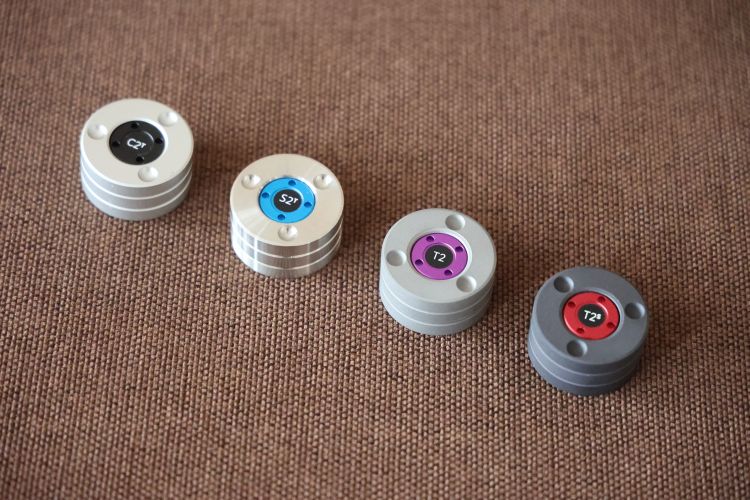
Ceramic and Titanium Balls
This made me highly curious to find out what a change from Ceramic to Titanium balls would do. Musing in advance on what the expected outcome would be, I thought that Ceramic might give a “harder” sound than Titanium. Surprisingly, what I heard was the exact inverse!
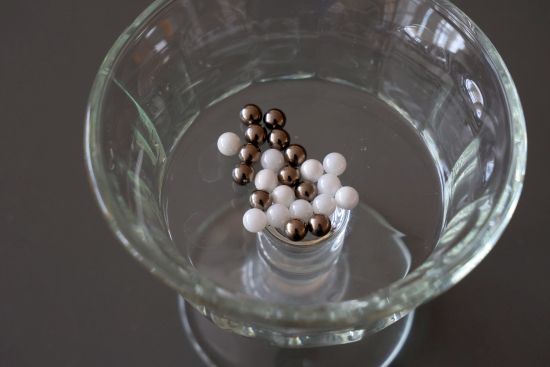
Retaining the T2 footers but changing the Ceramic balls for the Titanium balls, of course, one of the balls ran off while positioning the footer underneath the Mainz Power Distributor and I had to chase it on the floor to avoid it from disappearing. I like to think that I am generally very good with my hands but I have to say that this concept with loose balls is a little fiddly and it seems like something that a creative company such as Ansuz should easily be able to fix, certainly at the price of these footers. Anyway, after having replaced the Ceramic balls with Titanium balls, I was in for a new surprise!
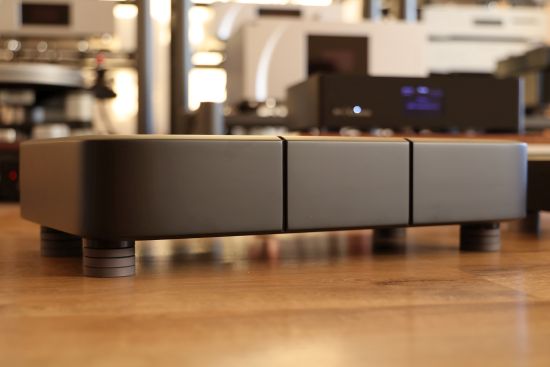
With only this seemingly insignificant change of balls, the sound instantly attained more snap, focus, and transient sharpness. It’s not that the Ceramic balls provided less detail or lower resolution, but with the Titanium balls, the transients were certainly more explicit, along with greater perceived propulsion and dynamics. If I had to indicate one potential downside, for some ears or systems at least, it would be that the Titanium balls also made the sound a little drier, compared to placement directly on the floor, or when using the Ceramic balls.
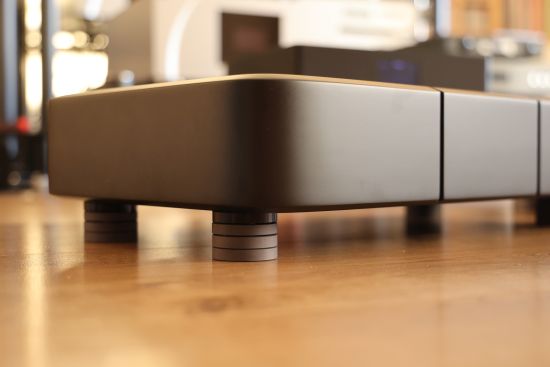
If the Ceramic balls were particularly seductive by providing enhanced speed and impact while still providing a superbly free-flowing sound, the Titanium balls were less dreamy and arguably a little soberer in their presentation. But what dryness had been reintroduced was still considerably less than with my own power distributor cables. For my taste and system, I ultimately prefer the more direct and more rhythmic and toe-tapping-inducing sound of the Titanium balls, but the beauty of having separate balls is that every owner can just decide for themselves.
Darkz T2 and Stacking Aavik U-Series components
The amplifiers and other U-series components are conceived to be easy to stack on top of one another using Darkz or just balls. With the exception of the inevitable runaway ball, this works well and looks nice. However, as I noticed, this does affect how the units sound. The way that I started my comparisons was with the U-180 positioned on Darkz T2 feet at the bottom of the trio stack, then the U-280 coupled via Titanium balls on top of the U-180, and finally, the U-580 at the very top, again coupled via Titanium balls.
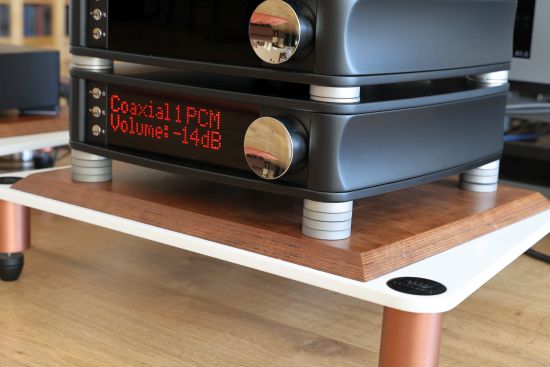
Above: the bottom component sits on Darkz T2 footers
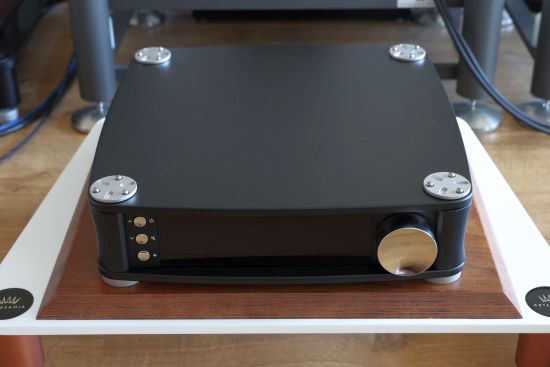
Above: the Titanium balls, onto which the next component can be placed directly
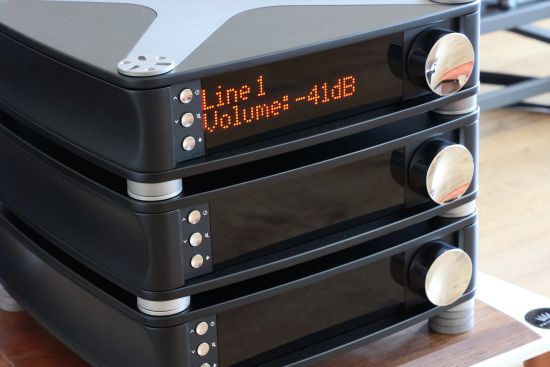
Stacked this way, the top unit is coupled/decoupled (depending on your viewpoint) by 2 sets of Titanium balls as well as a set of Darkz, while the bottom unit is coupled directly to the Artesania platform and carries the weight of the other two units on top. Given the confirmed significant influence of the Darkz combined with my accumulated knowledge of component placement and support, it’s only logical to assume that the order of the units would be significant for the sound. And indeed, it is. After listening to the U-180 when positioned on the bottom and then again when positioned at the top, I had a clear preference for the latter. Basically, the bottom position makes the sound heavier and darker while the top position provides more enthusiasm, expression, lyricism, and a more open treble.
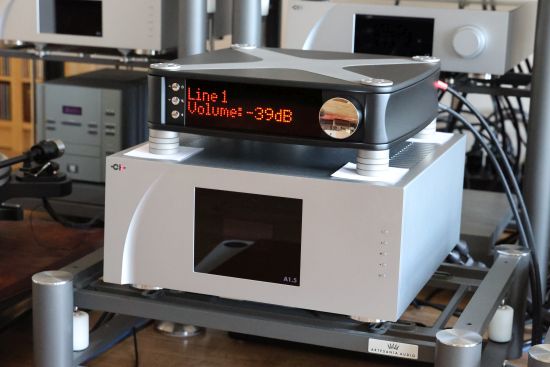
Reviewing the amplifiers while stacked would not lead to fair conclusions so I decided to listen to each amplifier set up independently. First, I tried the amplifiers on top of the CH Precision A1.5 amplifier that sits on an Artesania Aire platform with Linear Carbon Fiber Arms. While this has often provided the best sonic balance for lighter-weight products, in this case, I can’t say it was better. I reverted to the Artesania Modular Platform that typically enhances the upper bass fullness and overall timbre of any component placed on top of it, but here, and with the Darkz T2 resonance control feet, it works highly synergistically. Thus, I decided to assess all three amplifiers individually and placed on the Modular Platform using the Darkz T2.
So far, I have listened to each amplifier with the Ansuz T2 Resonance Control footers. From my recent Ansuz review of the D2 and D-TC Power Distributors, I know that their influence is not to be underestimated but still, I wasn’t prepared for hearing such a large reduction in performance with the feet removed. I mean, the amplifier still portrayed the music with all the aforementioned facets but they were all reduced to the point of making the U-580 sans feet sound almost like the U-180 with feet. Such is their contribution that I would consider them mandatory with the purchase of either of these amplifiers. Yes, even the U-180. I realize that 3200 euros may seem like a ridiculous amount of money to spend on something seemingly as trivial as a set of footers but their influence is arguably even larger than the difference between the U-280 and the U-580. Ultimately, the best sound is achieved by going for the top model U-580 and using it with the T2 footers.
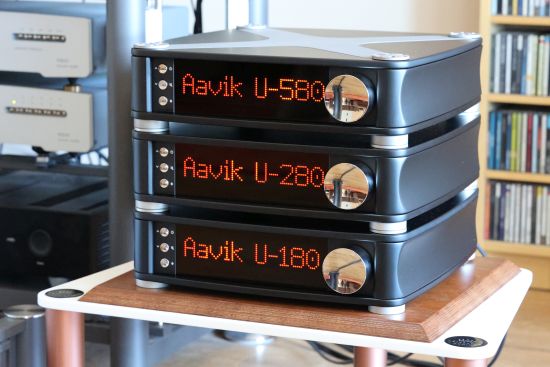
Darkz Adjustable T2 Supreme
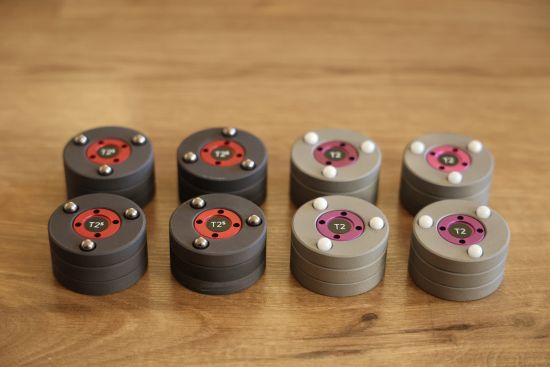
So far, I have listened to the Darkz T2 Resonance Control Adjustable T2’s with Titanium balls on top and achieved the incredible results as described. But there was one more upgrade to try, indeed, the last step up to the T2 Supreme footers. With the Mainz8 D-TC Power Distributor still in place, I swapped the T2’s for the T2 Supremes and fitted the Titanium balls on top.
Well, I’ll be… I was taking a sip of coffee when the motion simply halted with the cup at my lips. Recall that I noticed slightly less snap and bite than I like with the D-TC? With this single, seemingly insignificant change, the sound was undeniably crisper and more explicit. And not by a subtle margin, mind you. It was now on the same level as my own mundane power solution while retaining absolutely all of the aforementioned improvements and enhancements. And to think that this change in sound is to be attributed only to the Darkz’ outer coating just breaks my brain. Clearly, the tiers in the Ansuz portfolio are not only there for marketing reasons. Each level up does truly further extend the sonic abilities.
Even with the first strutting guitar chords of Chris Standring’s Crazy Bom Baizy on the album Don’t Tail, Dance, it’s crystal clear that there’s significantly enhanced immediacy and expression. And when the tight drum & bassline kicks in, there’s just no escape: the Supremes really do bring another transformation to the table.
In addition to the crisper delivery and more immediate transient behavior of the T2 Supremes, the soundstaging has also changed, but more subtly. Whereas the balance with the non-Supreme T2’s was leaning predominantly to space behind the speakers, with the T2 Supremes, the entire acoustic is now brought forward a little, with the baseline now still behind but closer to the speakers, and extending slightly less deeply.
With this slightly decreased depth, the forward imaging has also increased. Don’t worry, it’s not forward as in edgy or in-your-face, and it’s still very much an organic delivery with a living, breathing flow that goes in all directions. But just as some listeners may prefer the smoother, more relaxed, and more fluid-sounding Titanium balls, some listeners might prefer the more laidback approach of the T2’s over the T2 Supremes.
All this is very, very interesting, I must say. The Magicos were always able to throw a remarkably wide soundstage but with the Ansuz power solution, the soundstage is so magnificently deep and so utterly free-floating that it’s as though the speakers have actually been removed from the scene altogether.
Absolutely fascinating stuff.
Audio buddy Niels’ system
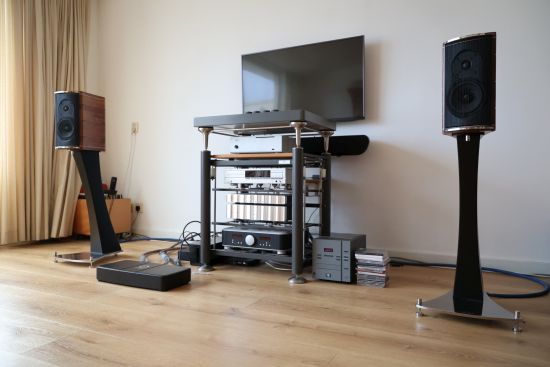
In the preface, I mentioned that I would test the Ansuz products not only in my own system but also in my friend Niels’ very different system. To enable something of a blind test, as well as to check if Niels would interpret the results in the same way as I do, I had not told him anything about what to expect.
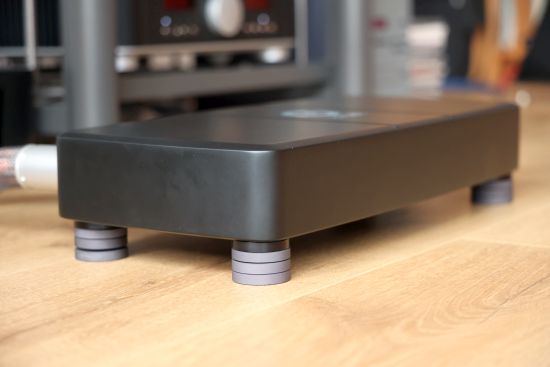
But sure enough, the results in his system 100% mimicked the results in my own system and his system benefitted arguably even more from the non-D-TC Mainz8 Power Distributor which provided a much more interesting acoustic with both wider and deeper staging and considerably more fluidity and flow. In this context, too, the Darkz proved indispensable, and we heard the same differences between the Ceramic and Titanium balls. Niels had a mild preference for the milder-sounding Ceramics while I preferred the more articulate-sounding Titanium ones.
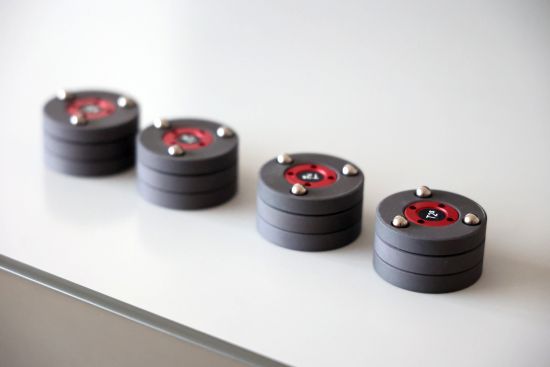
And in his system too, the D-TC version ensured an absolutely massive leap in performance that left us both open-mouthed on the listening sofa.
Next: Adding Darkz C2T to Børresen speaker stands
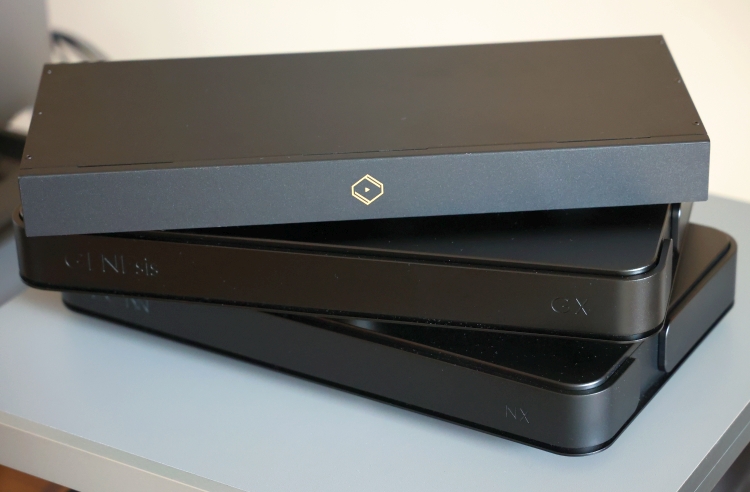
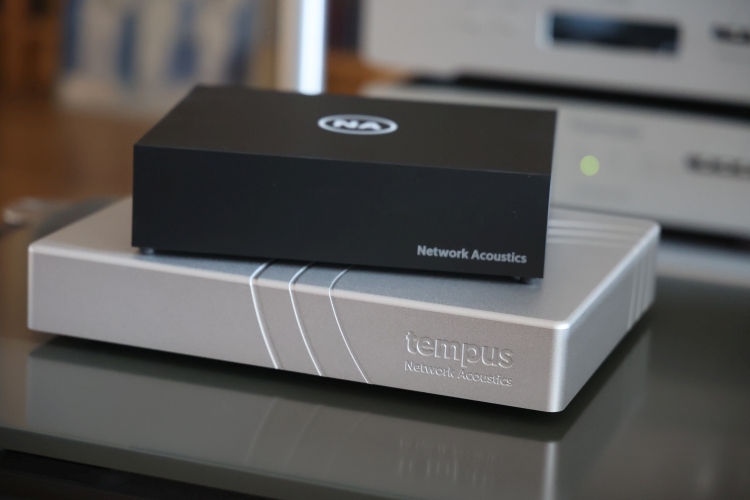

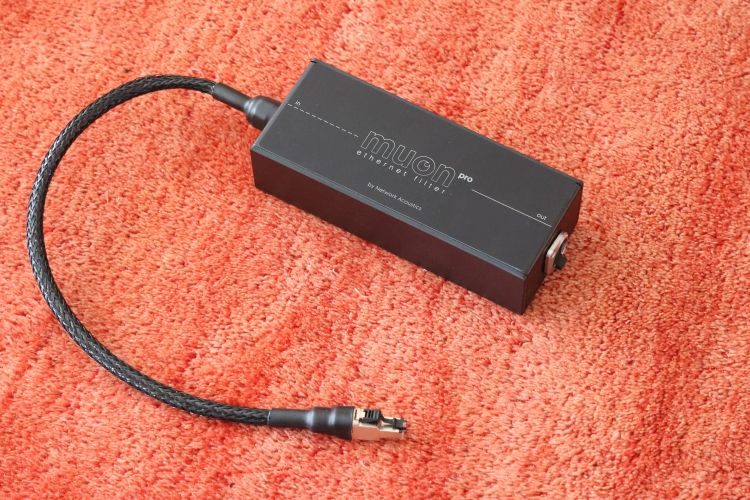
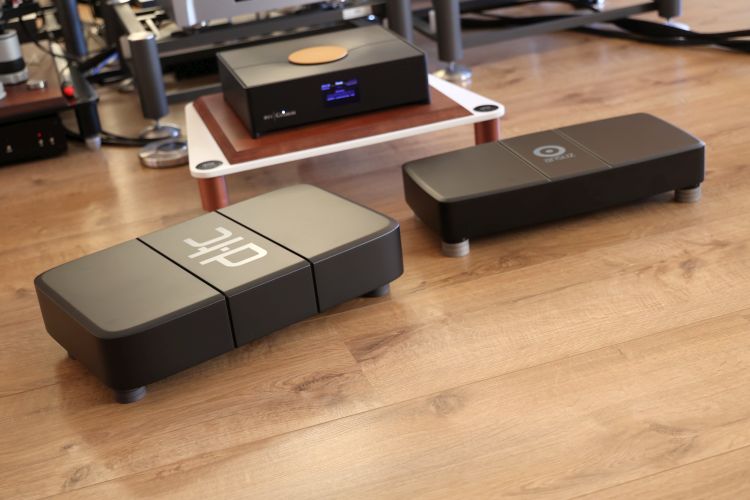
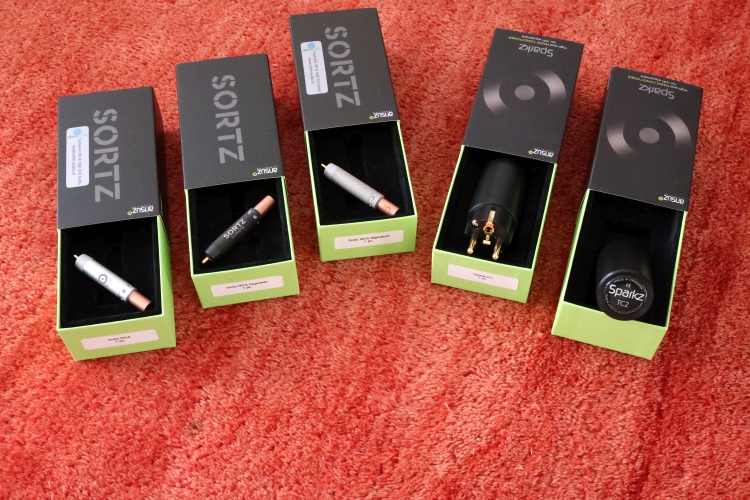
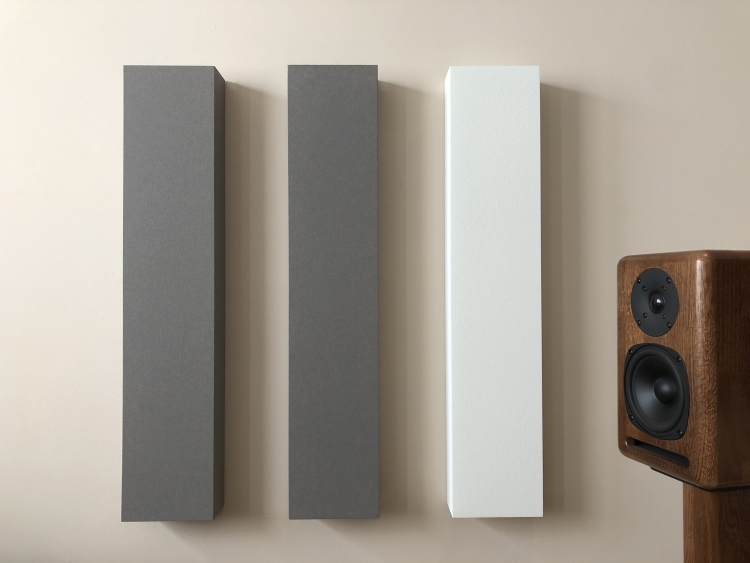
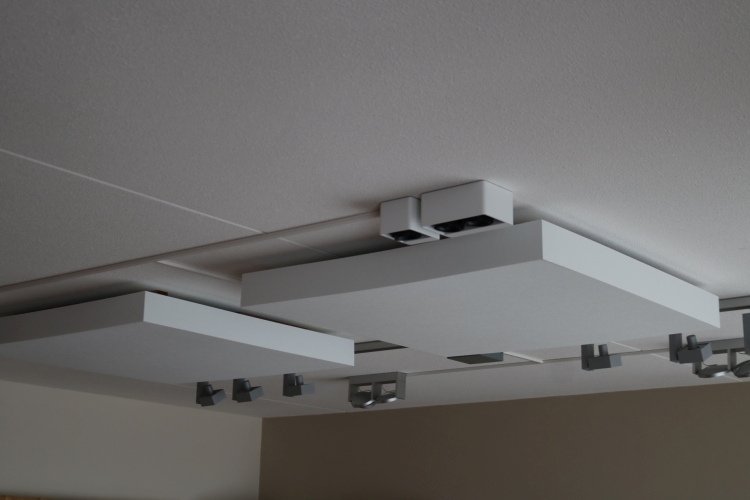
Hi Christian,
If you had only one set of darkz would you place them underneath a preamp or the end?
I have not found any single category equipment to be more or less sensitive to the influence of footers, Darkz or other. It all depends on what a particular component needs. You should find out which of your components can best use a little more incisiveness, articulation, resolution, etc, and use the footers there.
Hi
I am surprised how these ball bearing system are designed. They remind me of the old Peak Consult system. Using aluminium on all stages is the best way to get higher resonance. The only one I tested and found extremely good is made from 3 different materials apart of the tungsten balls. I saw the same “design errors” in a famed US ball bearing system, even more expensive. I was vibrations mechanical professor in a French Engineers University and expert in vibrations for more than 30 years.
Do the Darkz footers work with the Artesania Exoteryc racks?
Well, if you would get the optional threaded-end extenders (officially intended to be screwed in audio components instead of their standard footers) that couple to the Darkz via 3 extra balls, they could potentially be used in place of the Artesania spikes, but I’m not sure if you would too easily overload them that way. Using the same optional extenders you could potentially use them on the arms of the Artesania levels, which might actually lead to very good results.
I’m surprised you haven’t tried it.
I do not have the optional threaded adapters at hand to try this. But another reason for not persuing this is that the loose balls required for this application are very fiddly to work with. Unlike with the Darkz themselves where the balls are contained within the three discs, the threaded extension sits freely on top of 3 extra balls, which are prone to falling and rolling away on the floor. This is far from ideal, especially when you are a reviewer who frequently changes component positions.
Hahaha recognizable
Makes sense. I’d need to tape each of them together or something before removing the equipment. Thank you for taking the time to explain.